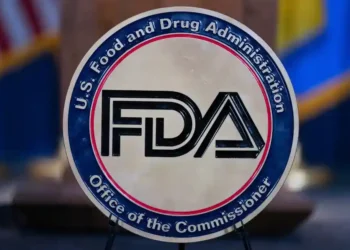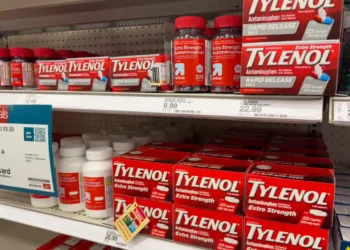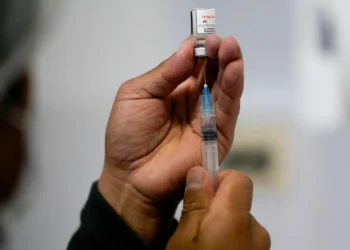Experts caution that deliberate sunburns can cause long-term damage and increase melanoma risk
Published Time: 08-18-2025, 23:05
Medical experts are raising alarms over a viral TikTok trend in which young people intentionally create “sunburn tattoos” by exposing unprotected skin to ultraviolet (UV) rays. Dermatologists warn the practice can lead to serious health consequences, including premature skin aging and a higher risk of skin cancer.
The trend, which involves placing stickers, tape, or sunscreen on certain parts of the skin to create temporary patterns, has gained popularity among teens and young adults seeking attention on social media. However, physicians stress that even a single sunburn represents damage to the skin that may have lasting effects.
What Are “Sunburn Tattoos”?
The practice involves leaving parts of the skin unprotected while tanning or sunbathing, allowing a design or shape to form when the surrounding skin burns. Some participants describe the patterns as “artistic” or “cool” for sharing online.
But health experts say the price of such viral creativity could be dangerously high.
“Regardless of how creative or harmless it appears, any sunburn is skin injury,” said Dr. Anthony Rossi, a double board-certified dermatologic surgeon in New York City, in an interview with Fox News Digital.
“This ‘sunburn tattoo’ trend still involves deliberate UV damage to the skin, which — over time — can increase the risk of both immediate and long-term consequences.”
The Hidden Dangers of Deliberate Sunburn
Medical research confirms that sunburn accelerates the skin’s aging process and raises the likelihood of developing skin cancers such as melanoma — the most dangerous form of skin cancer.
Dr. Rossi explained that patterns designed to leave shapes on the skin can create UV “hot spots”, concentrating damage in specific areas. “The damage is cumulative,” he warned, noting that patients often see the results of excessive tanning only years later.
Rossi recalled earlier decades when many people used iodine, baby oil, and reflective surfaces to darken their skin. Today, many of those individuals suffer the long-term consequences, including pre-cancerous lesions and invasive skin cancers.
“I regularly see patients who had frequent tanning during adolescence,” Rossi said. “By their 30s and 40s, many already present with pre-cancerous lesions or actual skin cancers. These can lead to multiple surgeries, permanent scars, and even melanoma, which can metastasize and be fatal.”
How Much Does Sunburn Increase Cancer Risk?
Dr. Sara Moghaddam, a board-certified dermatologist and Mohs surgeon at Delmarva Skin Specialists in Delaware, emphasized that repeated burns at a young age dramatically increase cancer risk.
“Experiencing five or more blistering sunburns between the ages of 15 and 20 can increase an individual’s melanoma risk by 80%,” Moghaddam told Fox News Digital.
She explained that each sunburn damages the DNA inside skin cells, creating mutations that may cause cells to grow uncontrollably. Over time, this damage can evolve into melanoma or other forms of skin cancer.
The American Academy of Dermatology (AAD) also warns that every tan — not just sunburns — indicates skin injury.
“As this damage builds, you speed up the aging of your skin and increase your risk for all types of skin cancer, including melanoma,” the AAD states on its official website.
Safer Alternatives: Spray Tans and Prevention
For those seeking a temporary design or “tattoo” effect, experts suggest spray tanning as a safer option.
Dr. Moghaddam explained that spray tans use dihydroxyacetone (DHA), a sugar that interacts with amino acids in the outermost skin layer to produce a temporary brown color.
“There’s no evidence that DHA from spray tans is harmful; the color simply fades as the skin naturally exfoliates,” she said.
Still, Dr. Rossi cautioned that spray tans do not protect against UV rays and should not replace sunscreen. He also warned that inhaling spray mist improperly could pose minor risks.
Sun Safety Tips from Experts
To reduce the risk of skin cancer and protect skin health, dermatologists and the AAD recommend adopting a consistent sun safety routine:
- Use broad-spectrum sunscreen with SPF 30 or higher and reapply every two hours.
- Wear protective clothing, including long sleeves, wide-brimmed hats, and UV-blocking sunglasses.
- Seek shade, especially between 10 a.m. and 2 p.m., when UV rays are strongest.
- Avoid intentional tanning, whether outdoors or in tanning beds.
- Be mindful of cumulative damage, as sun exposure builds up over time.
“Prevention is far easier than treatment,” Rossi emphasized. “Protecting your skin now can prevent years of medical interventions later.”
The Bigger Picture
While social media trends often encourage creative expression, dermatologists stress that health should not be compromised for online attention. With melanoma rates continuing to rise worldwide, experts hope raising awareness about the dangers of “sunburn tattoos” will help young people make safer choices.
Ultimately, O’Brien’s message is clear: what may seem like harmless fun today could have life-altering consequences tomorrow.
This article was rewritten by JournosNews.com based on verified reporting from trusted sources. The content has been independently reviewed, fact-checked, and edited for accuracy, neutrality, tone, and global readability in accordance with Google News and AdSense standards.
All opinions, quotes, or statements from contributors, experts, or sourced organizations do not necessarily reflect the views of JournosNews.com. JournosNews.com maintains full editorial independence from any external funders, sponsors, or organizations.
Stay informed with JournosNews.com — your trusted source for verified global reporting and in-depth analysis. Follow us on Google News, BlueSky, and X for real-time updates.












